|
Occasionally, I take stock of my “wine cellar” and open a bottle or two that has been collecting dust. While perusing the various labels this morning, I stumbled upon a box of three wines hidden so well I had genuinely forgotten about it. It was an exciting find, which inspired me to open one of the bottles and pair it with the evening’s dinner. The wines were a gift from Giovanna Neri, owner of Col Di Lamo in Tuscany, specifically Montalcino! Montalcino is located amongst the rolling hills of Tuscany, home to one of Italy’s most renowned wines, Brunello Di Montalcino. Montalcino is a small wine region comprised of 60,000 acres of olive groves, forests, and farmland, of which 3,500 acres are devoted to wine vineyards. Made exclusively from the Sangiovese grape, (named ‘Brunello’ in Montalcino), Brunello Di Montalcino was awarded the first-ever DOCG designation (Denomination of Controlled and Guaranteed Origin) in 1980, the highest designation given under Italian wine law. Brunello di Montalcino is one of Italy’s most famous and distinguished wines. The skin of the Sangiovese grape is thick and tends to deliver fruit-forward wine with bright acidity and high tannins. The climate in Montalcino is warm and dry, typical Mediterranean weather. Vineyards are planted up to 500 meters in elevation, with north-facing slopes experiencing a cooler microclimate and more winds. In contrast, the southern and western-facing slopes are exposed to extreme sunlight and maritime breezes. The vines are planted in various soils such as limestone, clay, schist, volcanic soil, and galestro, which is schistous clay soil commonly found in most of Tuscany’s best vineyards. All these elements can contribute to the difference in quality, complexity, and character of the wine. Regulations require that Brunello di Montalcino age for a minimum of two years in oak wooden barrels and at least four months in bottle before release. The Riserva wine must age at least six months in bottle and is released a year later onto the market. And the wine can only be bottled in the location where it is produced. These wines have an aging potential of 30 years if stored properly and acquire more complexity the longer it ages. Col Di Lamo Col Di Lamo is an exclusive, all-female organic winery owned by winemaker Giovanna Neri and her daughter, Diletta. The winery was founded in 1994 after her daughter was born. The estate covers an area of approximately 80 hectares. Giovanna inherited her passion for wine and winemaking skills from her father, who passed away in 1991. Giovanna considers her wines “her creations” (children) and continually spreads her love and respect for the land and her products. It is a small production winery of quality and refinement. Here is an excerpt from my interview with Giovanna a few years ago. What inspired and motivated you to make this an all-female winery? Giovanna: For me, it was a natural process. My company is my creation, which I wanted for myself and for which I fought a lot in a world that was still very male-chauvinist, especially the wine industry. Compared to others, I had to prove triple to make it clear that a woman, completely alone and starting from scratch, could create wines of the highest quality. When I tell my story, I always say that I consider my company another daughter of mine. I gave it a name; I dedicated all the commitment, love, and dedication I have to it, as with my daughter Diletta. Where did you do your training to become a winemaker? Giovanna: I graduated with honors in law and embarked on a career as a lawyer. I felt, however, that this work, although gratifying, was not my way. So, at the age of 40, I decided to drastically change my life and have a part of the family business (it’s not so obvious if you are a woman). So, without any particular skills and the help of anyone, I threw myself body and soul into this fantastic adventure. There have been challenging times. The beginnings were really hard; I only had men around me, and no one believed I could do it. Luckily, they are the same men who now hold me in esteem. What is Diletta’s role in the company? Giovanna: Diletta helps me in communication. I believe a young vision is essential in a world that runs more and more on the Internet, especially social networks. Tell me about some of your challenges with winemaking and the industry. Giovanna: I strongly believe in wine and organic products in general. I was among the first to choose this type of cultivation in Montalcino, not without criticism. But I am convinced that it is the future. I feel like a guest in this land, and I have chosen to do this job precisely because I love the planet and want to respect and enhance it as much as possible, even for future generations. Although all three wines are highly rated, I chose to open the Brunello di Montalcino DOCG 2016 This wine is hand-harvested and fermented with native yeasts. It is aged 24 months in oak barrels and six months in steel tanks. Nose: Berries, floral, cherry, earth, tobacco, herbs, fig and baking spice. Palate: Rich, savory, and balanced with blackberry, dark plum, cloves, cinnamon, nice acidity, and a long finish of savory and sweet dark berries. Simply elegant! Alcohol: 14% SRP: $68 Pairing suggestions: Aged cheese, roasted meat and game, hearty soups, stews, mushroom risotto, and seared tuna. I paired this wine with a thick, hearty, nutritious Lentil Tomato Soup filled with carrots, celery, onion, and an assortment of herbs. If you would like the recipe for the soup, please email me. Contact information is below. Until next time,
Cheers! Penina To leave a comment or if you have an inquiry, please contact me at [email protected] It’s hard to believe that summer is almost over, and autumn is just around the corner. I’m looking forward to cooler weather, embracing fall foliage, and changing the menu to include hearty soups and stews. And I love pouring a decadent red wine to pair with autumn! So, let’s explore a few Tuscan wines from the San Felice Estate. The historic estate of San Felice is situated in Chianti Classico in the commune of Castelnuovo Berardenga, with vineyards throughout Tuscany’s three most prestigious wine-making areas. They have 150 hectares in Chianti Classico, 23 hectares in the municipality of Montalcino, and 15 hectares in Bolgheri. 80% of their vineyards are devoted to Sangiovese, which is at the heart of their production. Here is a selection of three eclectic wines from their Chianti Classico Estate. Pugnitello Toscana IGT 2020 Pugnitello is an ancient and indigenous Tuscan grape variety. Its name in Italian is “little fist,” which refers to the shape of its cluster. San Felice has collaborated with the universities of Florence and Pisa in their experimental vineyards for the past 20 years, focusing on saving this grape from extinction. This wine is 100% Pugnitello. It is aged 18-20 months in French oak barriques and another eight months in the bottle. Nose: Dark fruit, perfume, baking spice, and toasted oak. Palate: Aromas segue onto the palate with blackberry, plum, and vanilla. It is rich and smooth. Alcohol: 13.5% SRP: $57.99 Pairing suggestions: Hearty red-sauce pasta, roasted fowl, lamb, stews, mushroom risotto, and aged cheese. Vigorello Toscana IGT 2019 This wine was first produced in 1968 and became part of what is known as the Super Tuscans. This term is applied to a style of high-quality Tuscan red wines that might include a blend of indigenous and non-indigenous grapes. This wine is a blend of 35% Pugnitello, 30% Merlot, 30% Cabernet Sauvignon, and 5% Petit Verdot. It is aged in French oak barriques for 24 months and then eight months in the bottle. Nose: Red jam, forest floor, baking spice, and roasted coffee beans. Palate: Rich and beautifully structured with dark cherry, dark berry, earthy, hint of herbs, and vanilla lingering on a long finish. Alcohol: 13.5% SRP: $57.99 Pairing suggestions: Aged cheese, grilled or roasted meat, game, vegetable stew, Porcini risotto, or seared tuna. Poggio Rosso Chianti Classico Gran Selezione DOCG 2017 To quote San Felice, “Poggio Rosso is the fruit of a rigorous selection of Sangiovese grape variety from selected parcels of the same single vineyard, and today it represents the pinnacle of San Felice’s terroir. A wine of immense depth and superb elegance, produced in limited quantity and exclusively in outstanding vintages.” This wine is 100% Sangiovese and aged 20 months in French oak barrels and then 15 months in the bottle. Nose: Intoxicating floral notes, red cherry, berries, plum, and baking spice. Palate: Earthy, with smooth tannins, plum, red berries, a trace of herbs, and a hint of fennel. Vanilla and dark chocolate linger on a long and delicious spicy finish. Alcohol: 13.5% SRP: $65.99 Pairing suggestions: Aged cheese, roasted or grilled meat, game, stews, or hearty pasta dishes. Wine from the Bolgheri Estate Bell’Aja Bolgheri DOC Superiore 2020 The Bolgheri DOC runs parallel to the Tuscan coast, bordering the Ligurian Sea. Bell’Aja Vineyard is located in a natural amphitheater overlooking the sea and benefits from abundant sunshine and cooling sea breezes. Grapes for this wine are sourced from Le Sondraie, the oldest Merlot parcel of this vineyard. The wine is 95% Merlot and 5% Cabernet Sauvignon. It is aged 18 months in French oak barrels. Nose: Jammy fruit, cherry, licorice, cocoa, roasted coffee beans, and spice. Palate: Juicy dark berries, plum, spice, toast, and silky tannins balanced with acidity. A beautiful wine with a long and satisfying finish. Alcohol: 15.5% SRP: $68.99 Pairing suggestions: Pasta, roasted game, glazed duck, aged cheese, and stew. Wine from the Campogiovanni Estate Campogiovanni Brunello di Montalcino DOCG 2018 The grapes for this 100% Sangiovese wine are sourced from the Campogiovanni vineyards situated on the south quadrant of the Montalcino hill and considered an excellent area for the production of Brunello. San Felice has 23 hectares here, of which 14 hectares are Brunello vineyards. This wine is aged 36 months in French oak barrels and Slavonian oak, followed by twelve months in the bottle. It is one of the San Felice Estate’s flagship wines. Nose: Ripe red berries, dark jam, earthy, balsamic notes, baking spice, and a hint of leather.
Palate: Aromas segue onto the palate with plum, pepper, and a touch of herbs. It is beautifully structured and rich, with a long and elegant finish that begs for another sip. Alcohol: 14% SRP: $66 Pairing suggestions: Wild game, grilled meat and fowl, aged cheese, pasta, vegetable stew, and truffle risotto. All of these wines have aging potential and will surely please the palate! If you missed my “It’s Wine & Dine Time!” article featuring a San Felice wine and a recipe prepared by Borgo San Felice Executive Chef Juan Quintero, click on this link. http://thewineknitter.com/the-journal/its-wine-dine-time Until next time… Cheers! Penina To leave a comment or if you have an inquiry, please contact me at [email protected] It is always a treat to pour a glass of Brunello Di Montalcino, but especially lovely when you can share the moment (virtually) with Count Cinzano, owner of Col d’Orcia! In May 2022, I wrote an article about Col D’Orcia based on a tasting with the Count, which took place earlier that year. Here is an excerpt from the article to bring you up to speed about this most iconic winery and region. Gently rolling hills dominate the landscape of Tuscany, famous for its medieval towns, wine vineyards, striking cathedrals, and the birthplace of renowned artists such as Michelangelo, Botticelli, and Leonardo da Vinci. Amongst this beauty and history lies Montalcino, home to one of Italy’s most famous wines, Brunello Di Montalcino. The village of Montalcino sits high up on a hill with vineyards sloping down into the valley. Montalcino is a small wine region comprised of 60,000 acres of olive groves, forests, and farmland, of which 3500 acres are devoted to wine vineyards. Count Cinzano said that only 50% of the land in Montalcino is farmed, and of that, only 15% is planted with vineyards. There are roughly 250 wineries here that produce Brunello di Montalcino. Brunello di Montalcino was awarded the first-ever DOCG designation (Denomination of Controlled and Guaranteed Origin) in 1980, and it is considered one of Italy’s most famous and distinguished wines. DOCG is the highest designation given under the Italian wine law. Brunello di Montalcino is made exclusively from the Sangiovese grape (named ‘Brunello’ in Montalcino). The skin of the Sangiovese grape is thick and tends to deliver fruit-forward wine with bright acidity and high tannins. And, of course, climate, soil, and production play a big part in the wine’s outcome. The climate in Montalcino is warm and dry, typical Mediterranean weather. Vineyards are planted up to 500 meters in elevation, with north-facing slopes experiencing a cooler microclimate and more winds. In contrast, the southern and western-facing slopes are exposed to extreme sunlight and maritime breezes. The vines are planted in various soils such as limestone, clay, schist, volcanic soil, and galestro, which is schistous clay soil commonly found in most of Tuscany’s best vineyards. All these elements can contribute to the difference in quality, complexity, and character of the wine. Nestled amongst the hills in a setting worthy of a painting sits one of the original estates of Montalcino, Col D’Orcia, with a winemaking history that dates back to the 1700s. The estate’s name translates to “the hill overlooking the Orcia River” due to its position between the undulating hills of the Orcia River and Sant’Angelo in Colle. The estate was sold to the Cinzano family in 1973 and only had a few hectares of vineyards at the time of purchase. Count Francesco Marone Cinzano, who now owns and manages the estate, took over Col D’Orcia in 1992. He increased his father’s plantings from 70 hectares to 150+ hectares today. And 108 of those hectares are dedicated to Sangiovese. In 2010 they began the process of converting their vineyards to organic. By 2013 all wines were certified organic. And today, it is the largest certified organic vineyard in Tuscany and the third-largest owner of Brunello vineyards in Montalcino. The Count’s mission is to produce quality wines from these hills. He said, “Quality is the result of healthy fruit. We are not just winemakers; we are farmers. We grow grapes and practice biodiversity.” He pays his respect to mother nature and is always searching for excellence. His motivation to become organic was “not to change practices, but change the mindset of people by using a homeopathic and holistic approach; that is the greatest challenge to becoming organic. And the beauty of protecting this special environment is to pass it on to future generations.” As mentioned above, Brunello di Montalcino is made exclusively from the Sangiovese grape. DOCG Regulations require that Brunello di Montalcino age for a minimum of two years in oak wooden barrels and at least four months in bottle before release. The Riserva wine must age at least six months in bottle and is released a year later onto the market. And the wine can only be bottled in the location where it is produced. At my most recent tasting we enjoyed three exceptional wines, all made with 100% Sangiovese grapes. Brunello Di Montalcino DOCG 2017 Count Cinzano explained that due to a year of great drought and heat wave, there was a small harvest, and only this label was produced. The wine is aged three years in 25, 50, and 75 hl. Slavonian and French oak casks and a minimum of one year in bottle before release. (hl is a hectolitre and equal to 100 liters) Nose: Floral, herbs, ripe red fruit, plum, and cherry notes. Palate: Lush red fruit with dark cherry, plum, baking spice, herbs, and licorice. Medium tannins with fresh acidity and a long finish. Alcohol: 14.5% SRP: $63.99 Brunello Di Montalcino Nastagio DOCG 2016 The grapes for this wine were harvested from a single vineyard. Count Cinzano said this wine is the best vintage in recent history and is not produced every year. Nastagio is a five-hectare single vineyard planted in 2006 and composed entirely of Sangiovese clones specially selected from research work in partnership with the University of Florence. The wine is aged the first year in tonneaux (5 hl), then subsequent years in large “botti,” followed by an additional 12 months in bottle. Nose: Lush red fruit aromas, baking spice, tobacco, and a hint of earth. Palate: An expressive wine with balanced acidity and smooth tannins. Notes of plum, dark fruit, licorice, and spice with a playful, sweet, and savory finish lingering on the palate. Alcohol: 15% SRP: $89.99 Poggio Al Vento Brunello Di Montalcino Riserva DOCG 2015 The grapes for this wine are sourced from a single, seven-hectare vineyard planted in 1974 called Poggio al Vento, which means “windy hill.” The first vintage was produced in 1982. The sea winds and the special soils of marl and limestone influence the vines. This wine is only produced in the best vintages and is the icon of the estate. It is aged for three years in 25 and 75hl Slavonian and French oak barrels and then for three years refinement in bottle. This wine is the only Riserva the estate produces. Nose: Beautiful and intense berry notes with spice, earth, tobacco, floral, and minerality.
Palate: Complex and well-structured, aromas segue onto the palate with rich red and dark fruit, herbs, anise, and firm tannins. A very long and satisfying finish. A remarkable wine! Alcohol: 15% SRP: $172.99 Count Cinzano said, “These are wines made to serve with food. It is the concept of drinkability and enjoying wines with food.” Here are a few food pairing suggestions for the above wines: Aged cheese, meat dishes, stews, game, tomato-based pasta, grilled veggies, grilled portobello mushrooms, risotto with truffles, and dark chocolate for dessert. Until next time… Cheers! Penina To leave a comment or if you have an inquiry, please contact me at [email protected] Gently rolling hills dominate the landscape of Tuscany, famous for its medieval towns, wine vineyards, striking cathedrals, and the birthplace of renowned artists such as Michelangelo, Botticelli, and Leonardo da Vinci. Amongst this beauty and history lies Montalcino, home to one of Italy’s most renowned wines, Brunello Di Montalcino. The village of Montalcino sits high up on a hill with vineyards sloping down into the valley. Montalcino is a small wine region comprised of 60,000 acres of olive groves, forests, and farmland, of which 3500 acres are devoted to wine vineyards. There are roughly 250 wineries here that produce Brunello di Montalcino. Brunello di Montalcino was awarded the first-ever DOCG designation (Denomination of Controlled and Guaranteed Origin) in 1980, and it is considered one of Italy’s most famous and distinguished wines. DOCG is the highest designation given under the Italian wine law. Brunello di Montalcino is made exclusively from the Sangiovese grape, (named ‘Brunello’ in Montalcino). The skin of the Sangiovese grape is thick and tends to deliver fruit-forward wine with bright acidity and high tannins. Of course, climate, soil, and production play a big part in the wine’s outcome. The climate in Montalcino is warm and dry, typical Mediterranean weather. Vineyards are planted up to 500 meters in elevation, with north-facing slopes experiencing a cooler microclimate and more winds. In contrast, the southern and western facing slopes are exposed to extreme sunlight and maritime breezes. The vines are planted in various soils such as limestone, clay, schist, volcanic soil, and galestro, which is schistous clay soil commonly found in most of Tuscany’s best vineyards. All of these elements contribute to the difference in quality, complexity, and character of the wine. Nestled amongst the hills in a setting worthy of a painting sits one of the original estates of Montalcino, Col D’Orcia, with a winemaking history that dates back to the 1700s. The estate’s name translates to “the hill overlooking the Orcia River” due to its position between the undulating hills of the Orcia River and Sant’Angelo in Colle. The estate was sold to the Cinzano family in 1973. The estate only had a few hectares of vineyards at the time of purchase. Count Francesco Marone Cinzano, who now owns and manages the estate, took over Col D’Orcia in 1992. He increased his father’s plantings from 70 hectares to 150+ hectares today. And 108 of those hectares are dedicated to Sangiovese. In 2010 they began the process of converting their vineyards to organic. By 2013 all wines were certified organic. And today, it is the largest certified organic vineyard in Tuscany and the third-largest owner of Brunello vineyards in Montalcino. The Count’s mission is to produce quality wines from these hills. He said, “Quality is the result of healthy fruit. We are not just winemakers; we are farmers. We grow grapes and practice biodiversity.” He pays his respect to mother nature and is always searching for excellence. His motivation to become organic was “not to change practices, but change the mindset of people by using a homeopathic and holistic approach; that is the greatest challenge to becoming organic. And the beauty of protecting this special environment is to pass it on to future generations.” As mentioned above, Brunello di Montalcino is made exclusively from the Sangiovese grape. DOCG Regulations require that Brunello di Montalcino age for a minimum of two years in oak wooden barrels and at least four months in bottle before release. The Riserva wine must age at least six months in bottle and is released a year later onto the market. And, the wine can only be bottled in the location where it is produced. I had the opportunity to taste the following wines with Count Cinzano. In addition to the five-star vintages of Brunello Di Montalcino, he included a bottle of Cabernet Sauvignon, another great vintage. All three wines are produced entirely with organically grown grapes farmed on the Col d’Orcia estate and bottled on location. Brunello Di Montalcino DOCG 2016 This is a blend of all the Sangiovese vineyards on the estate. The wine is aged three years in 25, 50, and 75 hl. Slavonian and French oak casks and a minimum of one year in bottle before release. (hl is a hectolitre and equal to 100 liters,) Nose: Floral, herbs, ripe red fruit, berries, and cherry notes. Palate: Lush red fruit with cherry, plum, spice, herbs, and licorice. Medium tannins with fresh acidity and a long finish. Alcohol: 14.5% SRP: $59.99 Poggio Al Vento Brunello Di Montalcino Riserva DOCG 2013 The grapes for this wine are sourced from a single vineyard planted in 1974 comprised of seven hectares called Poggio al Vento, which means “windy hill.” The vines are influenced by the sea winds and the special soils of marl and limestone. This wine is only produced in the best vintages and is the icon of the estate. The Count said that the 2013 vintage was small but exceptional. The wine was aged for three years in 25 and 75hl in Slavonian and French oak barrels and for three years refinement in bottle. Nose: Beautiful berry notes with spice, earth, and dark chocolate. Palate: Complex and well-structured with rich fruit, herbs, anise, and edgy tannins. The Count said, “The next ten years will show softness of tannins.” Alcohol: 14.5% SRP: $162.00 Olmaia Cabernet Sauvignon Sant’Antimo DOC 2015 The grapes for this 100% Cabernet Sauvignon come from a single vineyard, Olmaia, planted in 2005. The Count’s father originally planted Cabernet Sauvignon in 1984 on the hills of Montalcino, and the first harvest was in 1989. Sadly, his father passed away before the first vintage was produced. The Count remarked, “This wine expresses how special Montalcino is.” The wine is aged 18 months in new French oak barriques and a small portion in American barrels, then another eight months in bottle. Nose: Dark fruit, herbs, spice.
Palate: Rich and decadent with blackberries, black cherry, plum, herbs, spice, and chewy tannins (that will soften with aging.) A long and beautiful finish with notes of vanilla lingering. Alcohol: 14.5% SRP: $68.99 Count Cinzano said, “These are wines made to serve with food. It is the concept of drinkability and enjoying wines with food.” Here are some food pairing suggestions for the above wines: Aged cheese, meat dishes, stews, game, tomato-based pasta, grilled veggies, grilled portobello mushrooms, risotto with truffles, and dark chocolate for dessert. Until next time… Cheers and Buon appetito! Penina This article was originally published on Santé Magazine To leave a comment or if you have an inquiry, please contact me at [email protected] 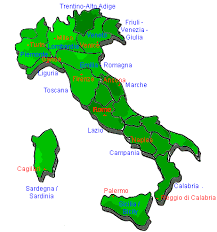 Bel Giorno! Yesterday I began my review of the Kobrand Tour d’Italia 2015 eight-city tour of Italy. We explored some wonderful vineyards and tasted interesting wines. I now have three more stops to make. 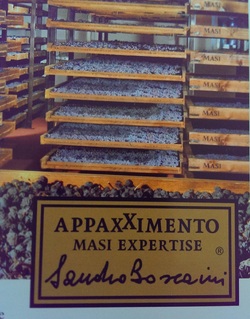 I made my way to Veneto, where Tony Apostolakos, the U.S. Director of Masi Agricola was waiting to guide me through a tasting of Amarone. It is interesting to note that Sandro Boscaini, the owner of Masi, is referred to as “ Mr. Amarone” due to the unique crafting of his wines. He uses the appassimento method to concentrate aromas and flavors in wine. The Appaxximento symbol can be found on his labels guaranteeing the authenticity and quality of Masi Wine. I’ll highlight a few of the wines I tasted. The 2011 Costasera Amarone was full-bodied with cherry, plum and spices. The 2008 Vaio Armaron Amarone, aged in cherry wood casks for four months, was amazing. The aroma and flavor of cherries, spices and fruit lingered on the palate. Before I departed I was treated to a taste of 1999 Amarone della Valpolicella Classico. It had a beautiful bouquet of fruit and earth, with dark fruit and spice on the palate. http://www.masi.it 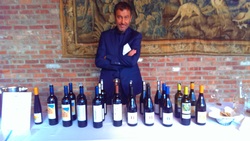 The next stop was Piedmont to visit Michele Chiarlo, a family owned and run winery. Their grape varieties are Moscato, Barbera, Nebbiolo and Cortese. It is interesting to note that the wines are never blended. I tried a 2011 Reyna, Barbaresco, 100% Nebbiolo. It was flowing with dark fruit, spice and licorice. The 2007 Cannubi Barolo, also 100% Nebbiolo was full-bodied with notes of licorice, spice and firm tannins. Although I didn’t have a chance to taste the light sparkling wine Nivole, Moscato d’Asti, 100% Moscato, I was told the wine is so delicate that, Michele Chiarlo named it Nivole after the Piedmontese word for clouds. http://www.michelechiarlo.it/ My final destination was back in Tuscany with Ambrogio E Giovanni Folonari. The Folonari family began their wine making in the 1700’s and are considered among Tuscany’s top winemakers. Their portfolio is vast and with the array of bottles set before me, I knew that I didn’t have time to sample them all. So I asked Claudio Andreani to guide me through a few of the wines. We started with the 2010 Tenuta La Fuga Brunello di Montalcino. It was full-bodied and robust with dark berry and tobacco. The 2012 Tenute del Cabreo Il Borgo was smooth and earthy. Tannins were a bit chewy. Next was Tenuta di Nozzole Chianti Classico Riserva, 100% Sangiovese. Aged for 16 months in Slavonian oak vats, the wine was earthy with firm tannins. My last taste was a 1997 Tenuta Campo al Mare, Rosso, Bolgheri. This wonderful Bordeaux-style blend was rich in flavor. Dark fruit, licorice and a long smooth finish completed my day of tasting. http://tenutefolonari.com
Have a great Friday! Cheers! Penina 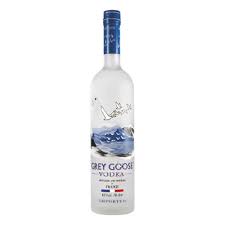 It was a productive day yesterday that ended with a cocktail and fun conversation with a friend. Of course, my cocktail was Grey Goose over ice. 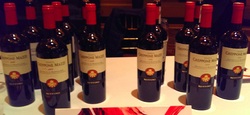 I tasted an amazing wine from the Ruffino Winery that is worth mentioning. It was a Greppone Mazzi Brunello di Montalcino 2008. The wine is made from 100% Sangiovese grapes. It held the aroma of red berries and floral undertones. Rich cherries, licorice and spice were on the palate. Invigorating tannins and bountiful finish with a hint of chocolate made this a stand out! http://www.ruffino.com FYI…the wine is aged in large oak casks for about 36 months, which is 12 months longer than required by Italian law. Much to do…Happy Sunday!
Cheers! Penina 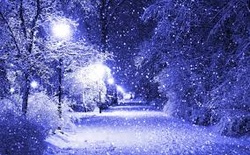 I woke to a beautiful snowfall this morning. My snowshoes are waiting for me at the front door and I hope to be on a fun winter walk this afternoon. 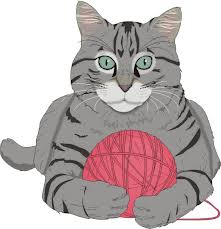 I haven’t forgotten about my knitting projects. It has been a little hectic of late, but I will have something to show you very soon!  Il Poggione is a major winery in Montalcino. I tasted several of their wines, including a “dessert” wine that was excellent. It was a Sant’Antimo DOC Vin Santo 2004. The grape blend is Trebbiano and Malvasia. The wine is fermented and aged for 5 years in small oak barrels and 6 months in the bottle. It was amber in color with heady aromas of honey, apricots and dried flowers. I tasted subtle fruits and honey. It was not cloyingly sweet…it was just right! I am most definitely adding this to my wine rack! Check out the website: http://www.tenutailpoggione.it/tenuta.asp Happy Saturday!
Cheers! Penina  I went AWOL, but I’m back! 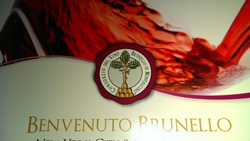 I went to a great Italian wine tasting event yesterday. Over 40 renowned wineries from Montalcino were represented. In addition to its five star (highest rating) vintage 2010 Brunello Di Montalcino, we tasted their Brunello Di Montalcino Riserva 2009, Rosso Di Montalcino and so much more! 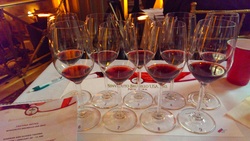 I started my day with a very informative seminar of the Montalcino region and it’s history. I tasted amazing 2010 wines from nine vineyards. After the seminar, I did a walk around tasting. I must admit that I didn’t get to all 44 booths, but I certainly got to the majority of them! I will give you my reviews over the next few weeks. I’ll start with SassodiSole Vineyard, Roberto Terzuoli. I tasted three of his wines, Brunello di Montalcino 2010, Brunello di Montalcino Riserva 2007 and Rosso di Montalcino 2012. They were all very good. The Riserva 2007 was a stand out. It had spices and fruit on the nose. Dark cherries, spice, a hint of pepper and pronounced tannins were on the palate. Visit their website for an interesting history! http://www.sassodisole.it/en/azienda Happy Wednesday!
Cheers! Penina |
Categories
All
|

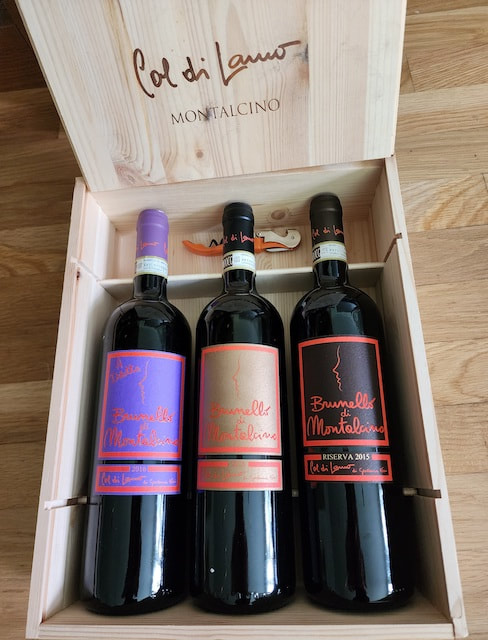
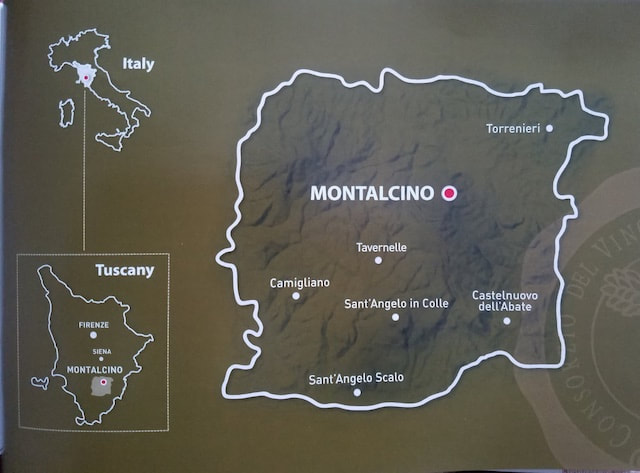
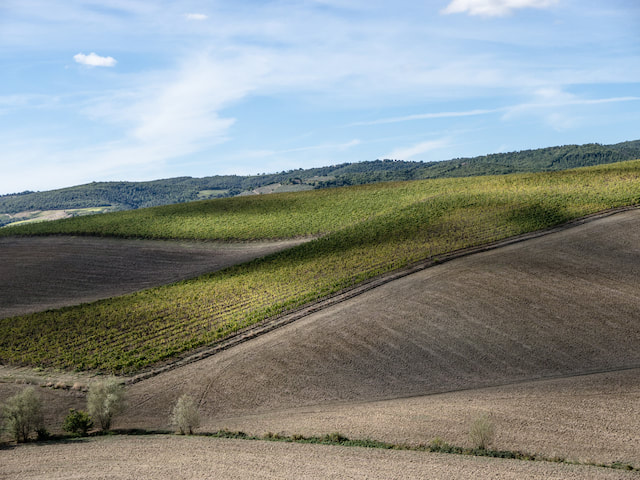
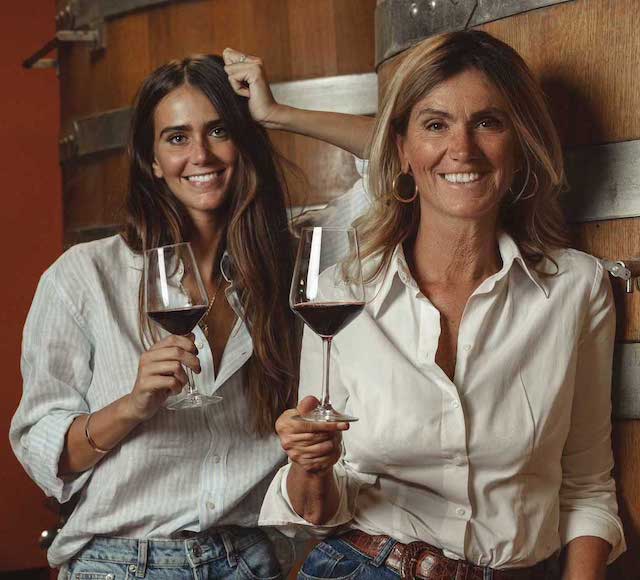
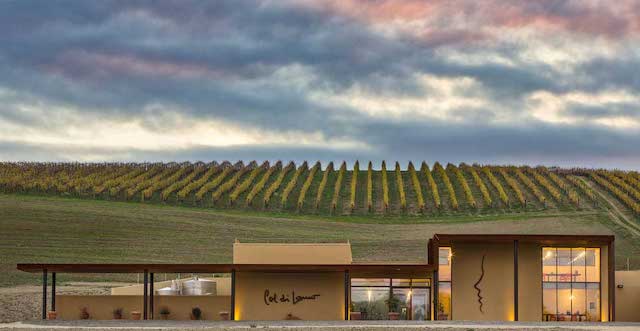
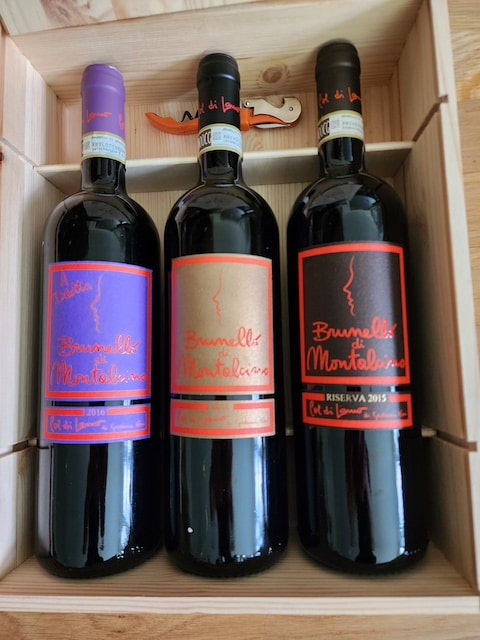
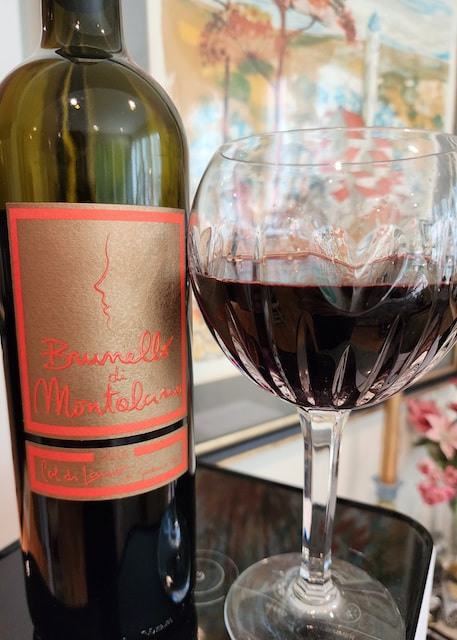
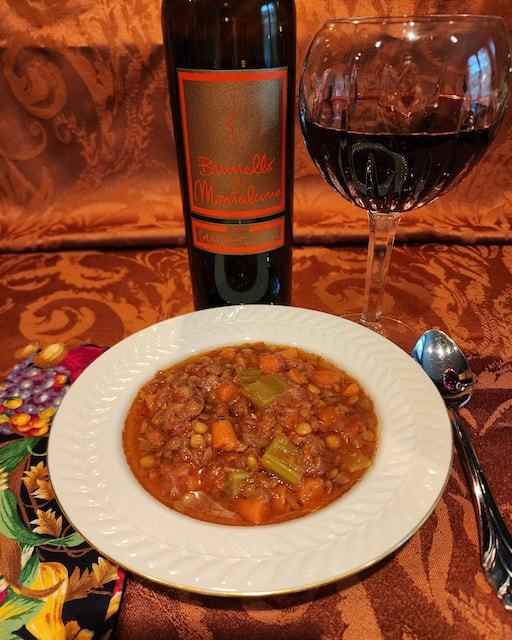
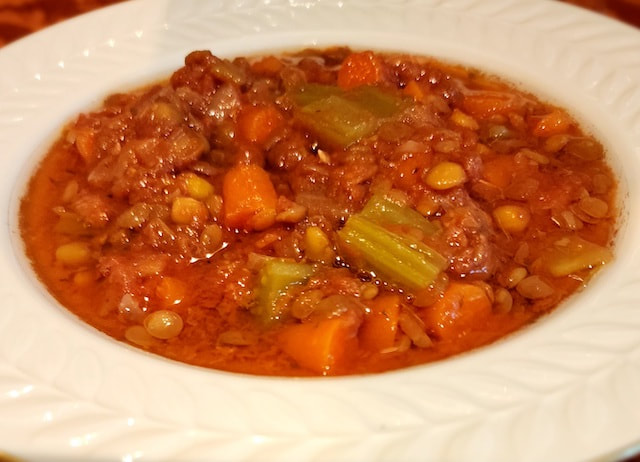
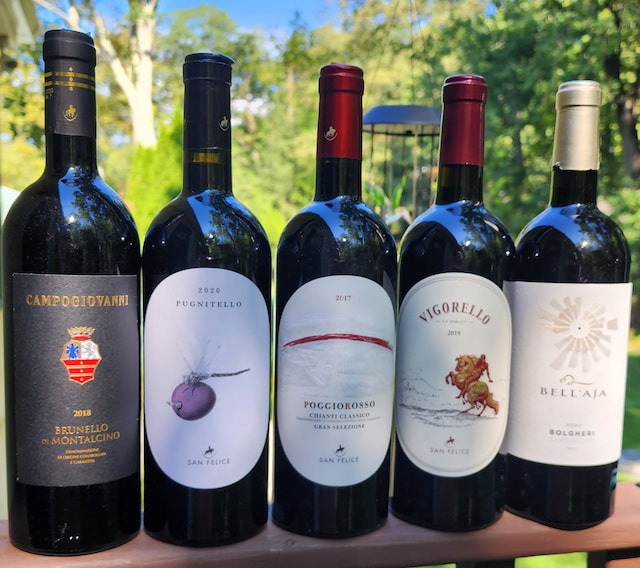

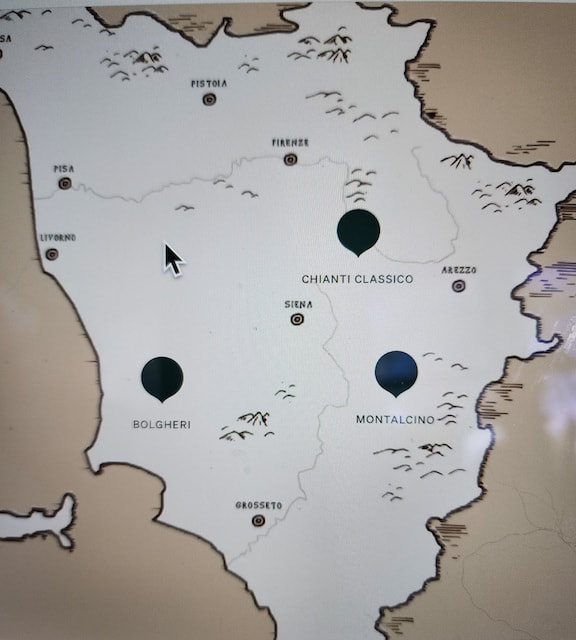
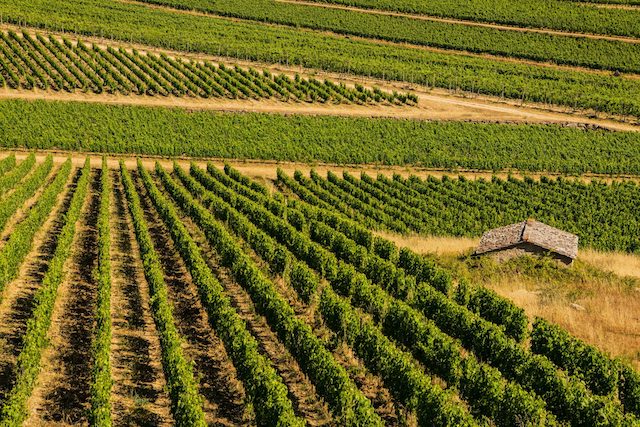
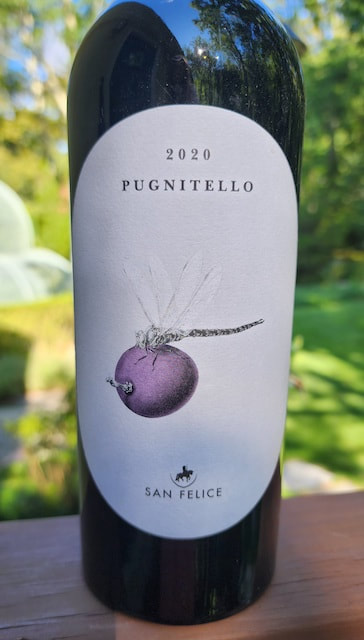
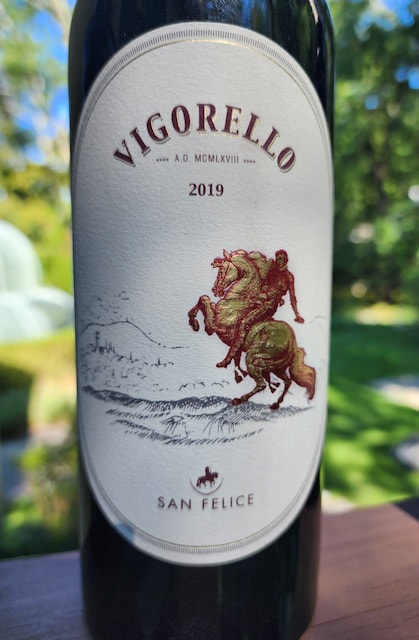
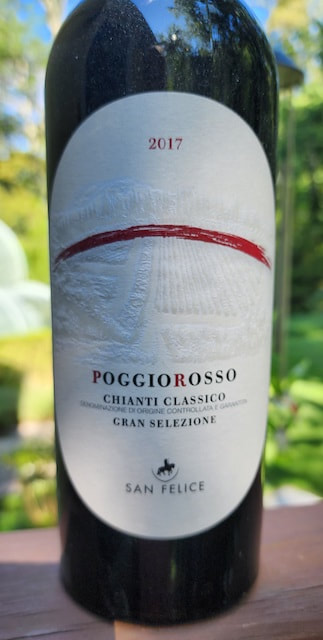
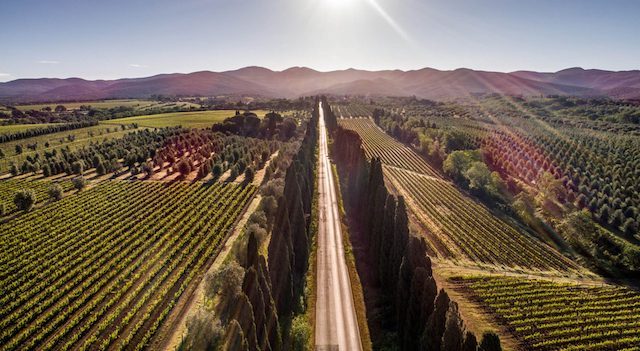
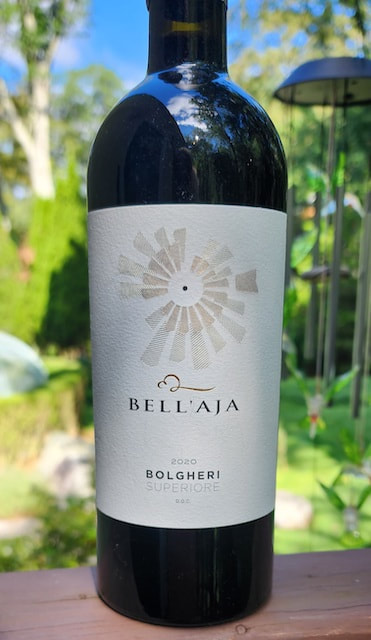
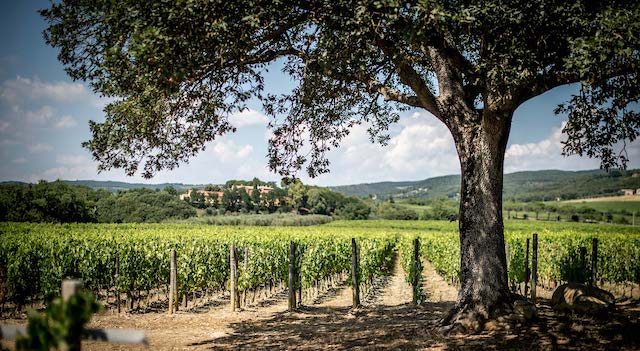
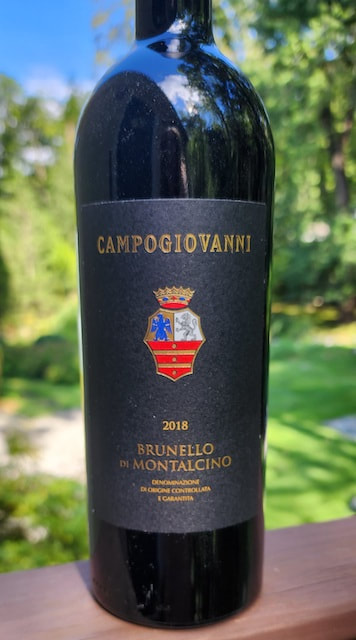
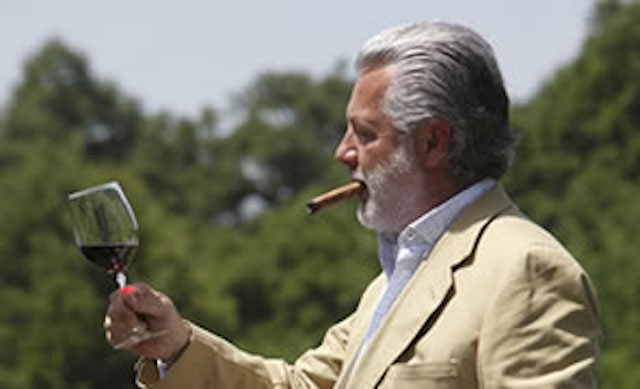
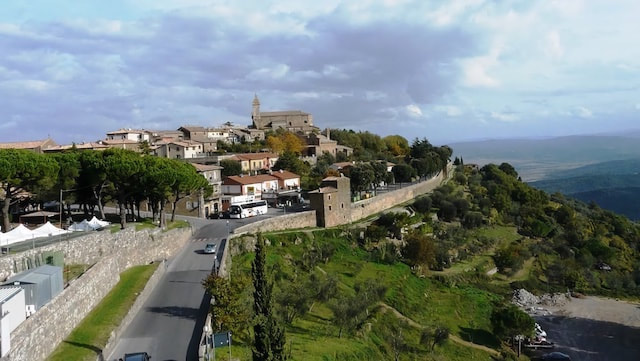
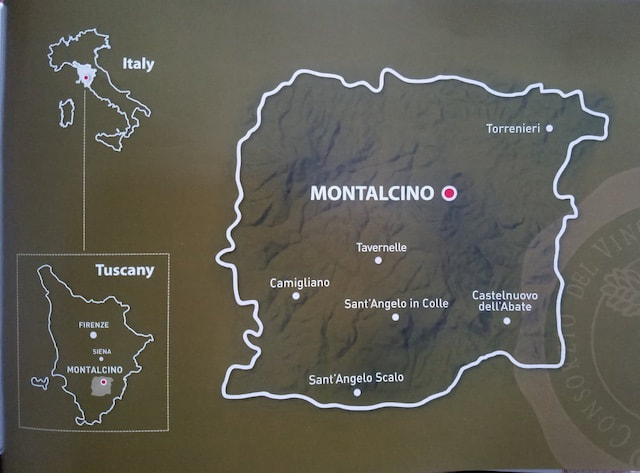
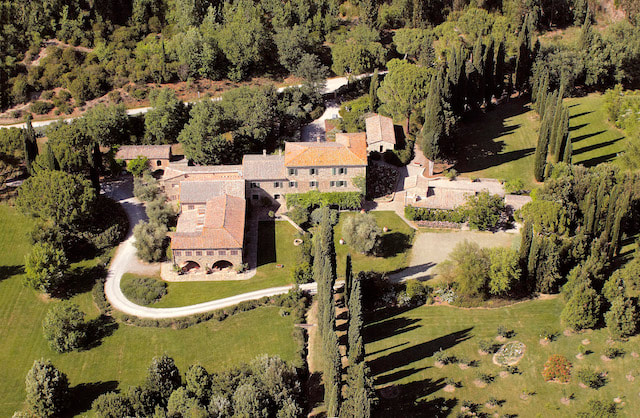
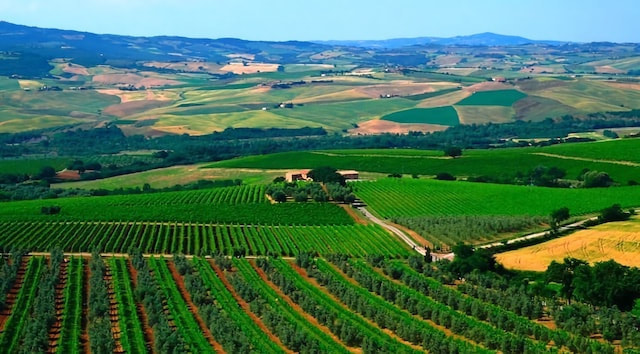
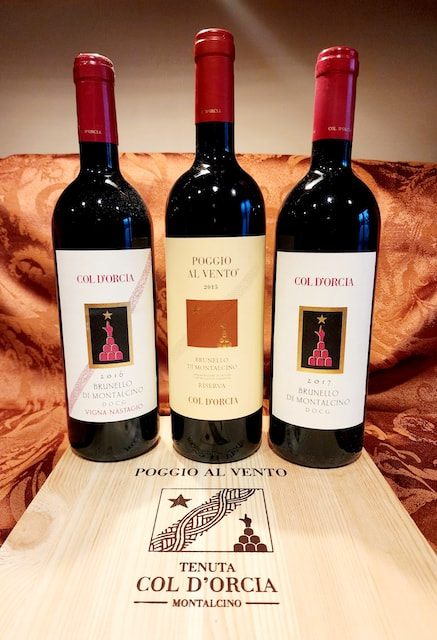
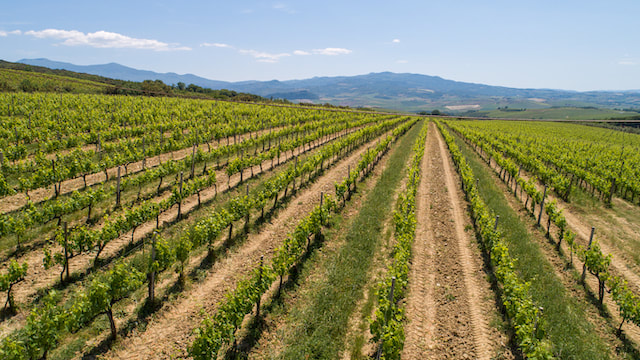
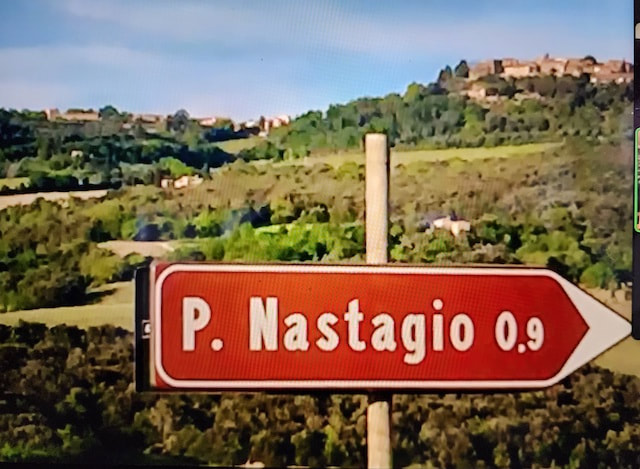
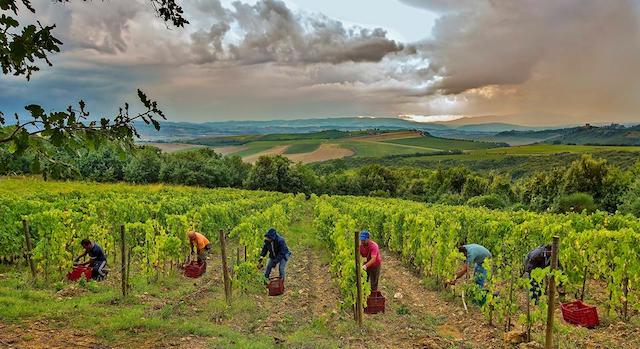
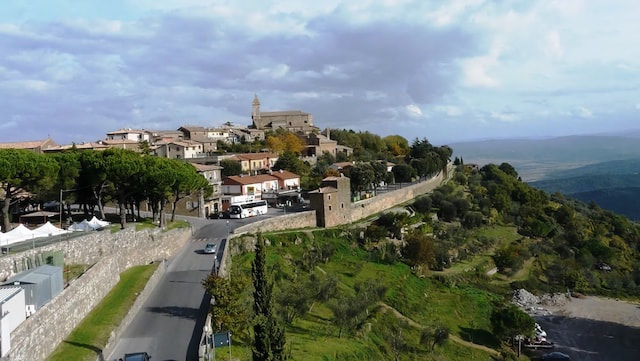
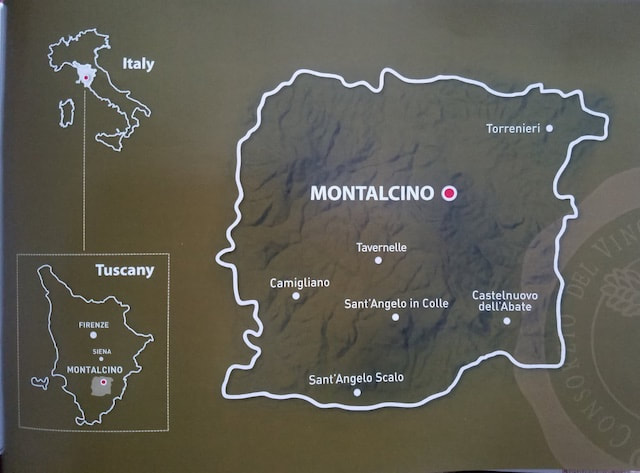
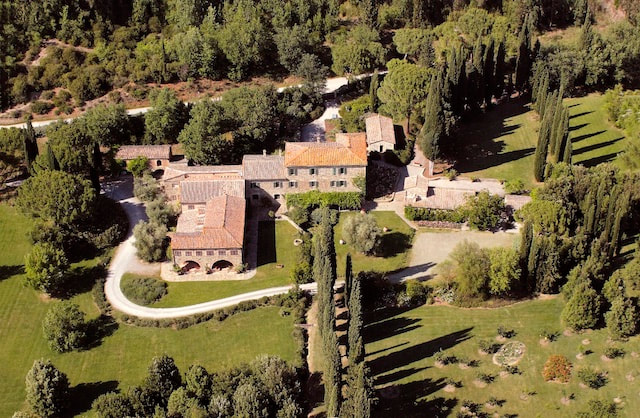
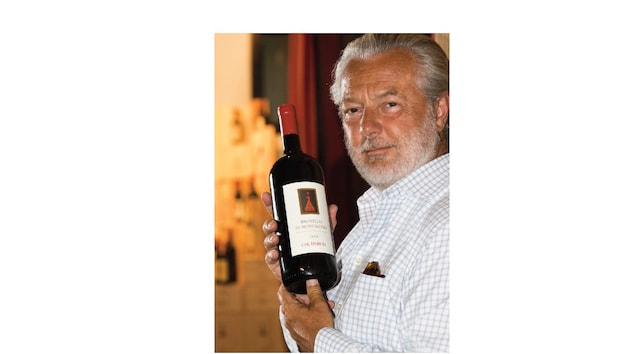
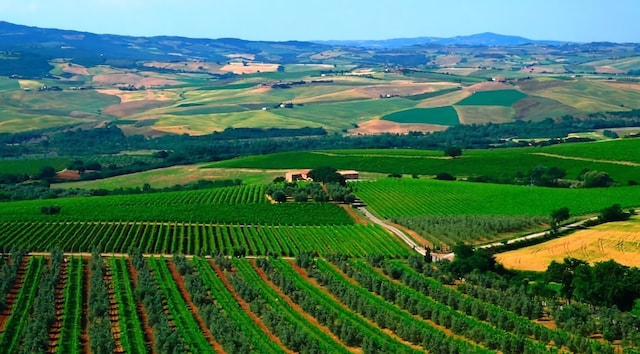
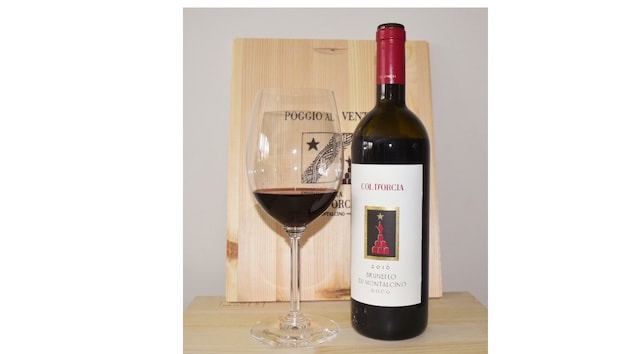
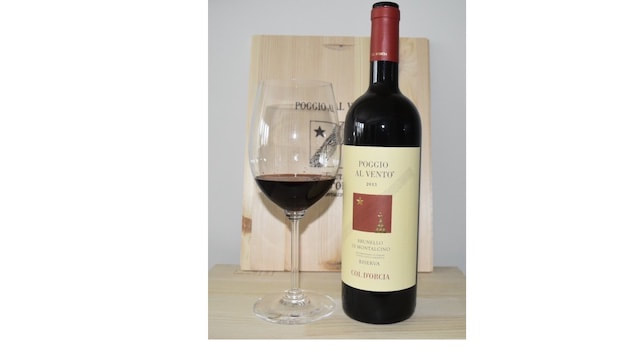
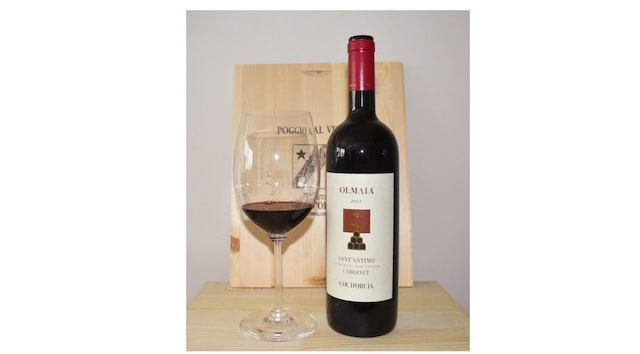
 RSS Feed
RSS Feed